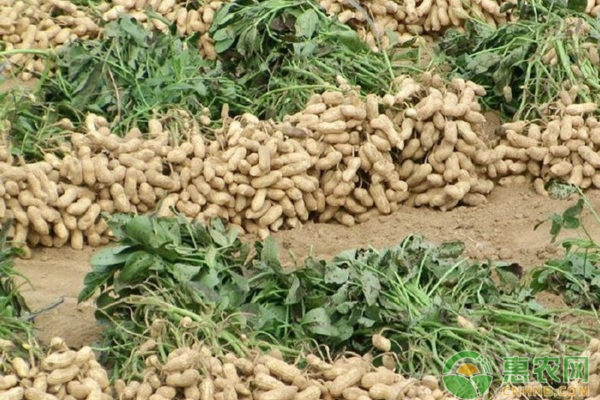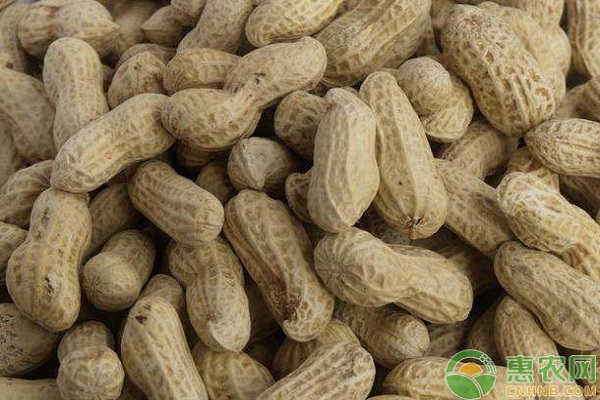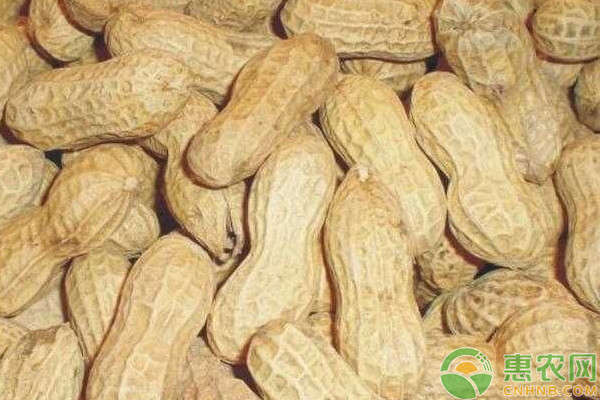Peanuts are called "longevity fruit" by many older generations. It is also said that they eat a few peanuts every day and can live to 99 years old. Do you have this statement? The flowering period of peanuts is generally from June to August. The processing industry of peanuts is very extensive. Today, we will study the sowing conditions and cultivation techniques of peanuts together with the small series of Huinong. First, preparation before the broadcast 1. Land selection Peanut is a deep root crop. It is suitable for cultivation in sandy loam or medium loam. The soil layer is required to be more than 1 m deep, the soil is loose, the terrain is flat, the irrigation and drainage is convenient, the soil aeration is good, and the sunny plot is planted. 2. Site preparation Peanut land should be generally cultivated 20-25 cm deep, and ploughed in time to reach "deep, flat, cashmere". In the early spring of the next year, the top of the mountain is covered with water and water. In the water area, 5-7 days before the sowing, the bottom water can be poured, and the water is 40-60 square meters. 3. Select film For the planting of peanuts, it is necessary to use a 0.007-0.008 mm micro-film or a "linear film" to facilitate the penetration of the needles and reduce the cost. 4. Selection In areas where the frost-free period is about 120 days, generally moderately fertile plots, early-maturing varieties with early development and short growth period are selected, “Buihua No.1†and “Luhua No.9â€. In areas where the frost-free period is more than 130 days, the land with better soil fertility is selected from the excellent varieties such as Luhua No.13, Luhua No.14 and Huayu No.16. Second, scientific fertilization technology 1. Scientific fertilization based on peanut yield. Before sowing, according to the fertilizer requirements of different peanut varieties, the quality of soil nutrients and fertilizers, through the soil test, the implementation of scientific balanced fertilization technology, can not use a single fertilizer. 2. Generally, the land with a yield of more than 500 kilograms per mu requires more than 6,000 kilograms of organic fertilizer per mu (organic fertilizer including manure, green manure, grass ash, biogas residue, biogas slurry, crop orange fertilizer, cake fertilizer, etc. ). Inorganic fertilizers include: mineral nitrogen, phosphorus, potassium fertilizer and compound fertilizer prepared with nitrogen, phosphorus and potassium, 50 kg, and superphosphate 80-100 kg. The amount of fertilizer should be determined based on peanut yield. 3. Planting peanuts requires better application of the base fertilizer at one time. Third, plastic film covering technology Film selection Planting peanuts use 85-90 cm micro-film, thickness between 0.008-0.009 mm, light transmittance greater than 70%, easy to be penetrated by fruit needles, good paving performance, non-stick microfilm. 2. Seeding method The waterland requires ridge cover planting, the ridge height is 10-15 cm, the ridge width is 60 cm, the ridge top is flat, the groove width is 20 cm, and the ditch depth is 50 cm. In the dry area, the spring sowing is well-grounded 7-10 days before the sowing. Then, the cover film is grabbed to protect the sputum, and then the hole is planted. This method is called first covering and then sowing. The water area is watered before the sowing, and then the ground is covered again. Perforation generally requires a diameter of 2 cm, and the depth of the broadcast is 4-5 cm. After drilling, the wet soil is sealed to prevent running. The plots covered after sowing, and then seeded on the membrane after emergence. This method is suitable for airborne broadcasting and can be used in water, land expansion and well-preserved dry land. 3. Filming method The mulch should be placed close to the ground, with a width of 10 cm on both sides and tight pressure with wet soil. On the film, every 5-10 cm, hit a soil belt to prevent wind and peel off the film. In areas where conditions permit, mechanical filming can be used. Fourth, seeding technology Seed treatment Peanuts have to be "selected and mixed". "One choice" is a selection. That is, the seeds are selected, and the seeds, seed, and seeds are removed. "Three mixes" is a mixture of insecticides, each 50 kg of seeds, 150 grams of symbiotic phosphorus emulsifiable concentrate; two mixed fungicides, each 50 kg of seeds with 200 grams of carbendazim seed dressing; 2. Sowing date When the ground temperature of 5-10 cm reaches 3-15 °C, sowing begins, and in our city, it is usually planted on April 25 and emerges in early May. 3. Seeding depth Peanut sowing is generally 4-5 cm in sandy loam and 3-4 cm in middle soil. 4. Density Generally in the high-water and fertile land, the acreage of seedlings is about g000-9000 points, and in the medium-water-fertilizer area, the seedlings are 10000-12000 points, one hole and two seeds. Five, post-plant management 1. Checking the film and expanding the film For the plots that are planted after the first cover, in case of high winds, it is necessary to check in time, cover the mulch film that has been uncovered by the wind, and seal the cracks with wet soil. 2. Punching and seedling The plots covered after sowing first, when the peanut seedlings grow 2 to 3 leaves, it is necessary to release the seedlings in time. Open a small opening on the microfilm to allow it to be fully ventilated. Let the seedlings grow in the membrane for 7-10 days to prevent frostbite in low temperature and windy weather. 3. Clear seedlings When the peanuts emerged, the surrounding soil was immediately opened, so that the two leaves of the first pair of side branches were exposed, and the clearing trees increased the yield by more than 30% compared with the control. 4. Foliar spray fertilizer If the seedlings are deficient, use 40 kg of 0.3% potassium dihydrogen phosphate solution plus 1 kg of urea per mu: or 2% of superphosphate 40 kg solution to spray the leaves to promote the healthy growth of the seedlings. 5. Adjust growth In high-water-fertilized plots, the nutrient growth of peanuts is too strong, and it is easy to grow. It can be sprayed with foliar plants to regulate the B9 or the defoliation. The spraying concentration is 0.05%-0.1%, and 40 kg per mu can be sprayed. The shrinkage is sprayed with 2-3 grams of water per 40 acres, which controls the vegetative growth of peanuts and promotes reproductive growth, resulting in multiple results and fruit filling. 6. Watering and top dressing In the flowering period of peanuts, if the rain does not rain, if the water content of the soil layer is less than 10%, it should be watered with 7-10 kg of urea. When watering, slowly infiltrate with smoothing and smoothing. , soaked, to avoid flooding. Sixth, timely harvest The mid-early maturing varieties are harvested in the middle and late September, and the late-maturing varieties are harvested in time in early October. If the harvest is too late, the peanuts will fall off in the soil to reduce income. After harvesting, the pods are dried for 5-7 days. When the water drops below 10%, they can be collected. After the peanuts are harvested, the residual film in the field should be removed in time. The above is the cultivation method of peanuts. Do you have any friends to see if you have any help in your cultivation process? If you have better experience and willing to share, you can leave a message!
China Daily chemical Suppliers
Here you can find the related products in Daily chemical, we are professional manufacturer of Daily chemical. We focused on international export product development, production and sales. We have improved quality control processes of Daily chemical to ensure each export qualified product.
If you want to know more about the products in Daily chemical, please click the Product details to view parameters, models, pictures, prices and Other information about Daily chemical.
Whatever you are a group or individual, we will do our best to provide you with accurate and comprehensive message about Daily chemical!
Hydrolyzed Keratin, Menthol, Daily Chemistry, Cosmetics Field Xi'an Gawen Biotechnology Co., Ltd , https://www.ahualyn-bio.com

